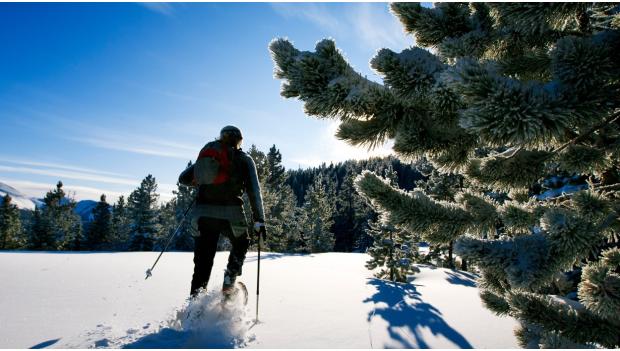9 Dreamy Winter Wonderland Hikes
‘Tis the season to be … hiking! Just because there is white stuff on the ground doesn’t mean you need to hang up your hiking boots (err, snowshoes) for the winter. While snow and freezing temperatures definitely add a more technical challenge to your hiking experience, some of the most beautiful hikes in the country show their true colors during colder months.
What’s not to love? From picturesque snowy vistas to impressive frozen waterfalls, winter is the perfect time to explore new hiking trails or get a fresh perspective on some of your favorite routes. As long as you stay safe, are aware of weather conditions and are well prepared with gear, winter hikes can be an intensely rewarding outdoor experience for all ages. Another bonus: you won’t be met with large crowds, pesky bugs and brutal heat while out on the trail. So bundle up, grab a thermos of your favorite hot beverage and get inspired for your next winter adventure.
Discover nine dreamy winter wonderland hikes in America.
1. Chinle Trail Loop
Zion National Park, Utah
It makes sense why Zion is one of the most popular national parks in the United States—with diverse desert landscapes and a wide array of trails, there’s something for everyone at Utah’s star attraction. Ideal for winter hiking, the 15.4-mile Chinle Trail loop has year-round access and features mountain vistas and impressive views of the Towers of the Virgin, Cougar Mountain and Smith Mesa. Get a break from the notorious summer temperatures by choosing a colder, less-traveled winter date—just make sure you budget enough time with the shorter days of sunlight. Learn more the Chinle Trail, here.

2. Mazama Ridge Trail
Mount Rainier National Park, Washington
This intermediate-level snowshoe trail has some of the most impressive winter landscapes on this hiking list. Mazama Ridge is approximately 6 miles in length (out-and-back), gains 900 feet in total and tops out at 5,700 feet. Once you reach the top of the ridge, you’ll see the snow-capped Tatoosh Range and Mount Rainier in all its winter glory. Conditions can change rapidly, so be sure to double check the weather forecast and snow report before you start the route. Learn more about Mazama Ridge, here.
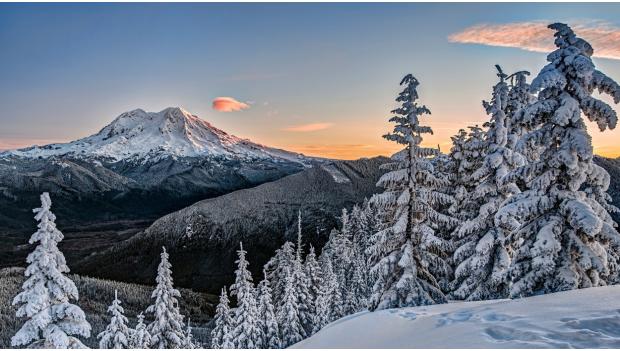
Recommended: 7 Outdoor Activities for Cold Weather Adventure
3. Lumpy Ridge Trailhead to Gem Lake
Rocky Mountain National Park, Colorado
It’s short, steep and impressively beautiful—the Rocky Mountain National Park winter hike from Lumpy Ridge Trailhead to Gem Lake is approximately 1.6 miles one way, and gains about 1,000 feet in elevation. The hike (snowshoes likely needed) is flanked by ponderosa pine and aspen trees, and tops out at 8,800 feet. The view of rocky outcrops paired with the frozen lake and snow-covered trees is truly a Colorado winter wonderland to behold. Learn more about Gem Lake, here.
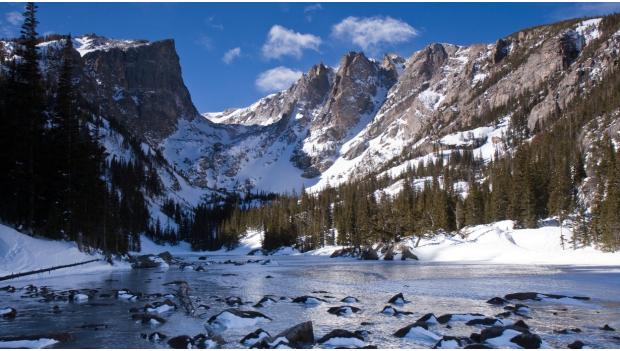
4. Mary’s Glen Trail to Ashley Falls
Haines Falls, New York
Let’s face it, not all of us are looking for a multi-mile winter hike through the dense snow. At 0.6 miles in total (0.3 miles out-and-back), Mary’s Glen Trail is a quick, festive outing to one of the most popular frozen waterfalls in New York. The trail is a gradual uphill walk through a spruce fir forest, and snowshoes are required during periods with high snowfall. Learn more about Mary’s Glen Trail, here.
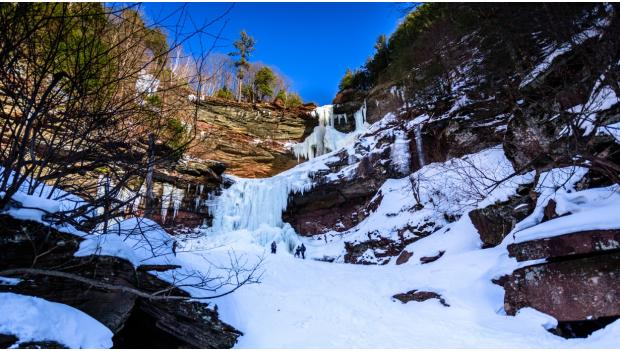
Recommended: The Ultimate Guide to Winter Camping
5. Banadad Ski Trail
Boundary Waters, Minnesota
We know, we know—skiing isn’t hiking. But once you get the hang of cross country skiing, it’s about as close as it gets, and the experience affords you access to otherwise unreachable trails. The Banadad Ski Trail weaves through boreal forests between Lake Superior and the Canadian border. It’s not uncommon to see moose hanging out in a clearing and wolf prints in the snow. At 16.7 miles in length, this is no casual winter undertaking. Check out adventure vacations, complete with wilderness yurts and all the necessary gear. Learn more about the Banadad Ski Trail, here.
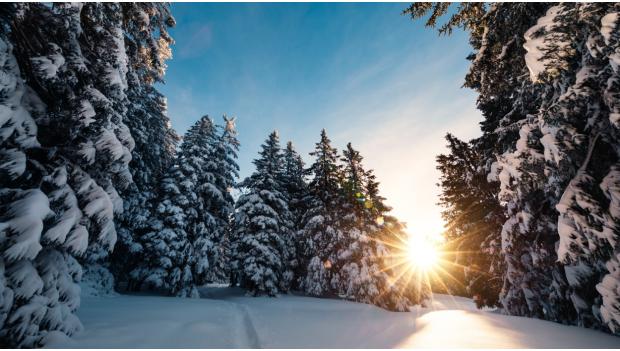
6. Ruby Valley Hot Springs Trail
Ruby Valley, Nevada
There’s nothing better than soaking in natural hot springs surrounded by 11,000-foot snow peaks and a wildlife refuge. It’s a trek to get to the Ruby Valley Hot Springs (approximately seven miles one way by snowshoe or cross country skis), but it’s worth the effort. The largest pool stays at a comfortable 100 degrees Fahrenheit, and the smaller pools top out at 122 degrees. Double check it’s not too hot before easing in. Once you’re soaking, keep your eyes open for pronghorn sheep and several species of birds. Learn more about the Ruby Valley Hot Springs, here.
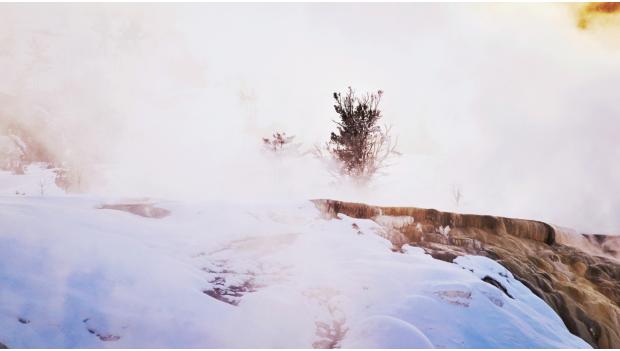
Recommended: Cold Weather Camping Hacks
7. Grand Canyon National Park Trails
Grand Canyon, Arizona
Ditch the searing heat and throngs of tourists at this ultra-popular national park by taking advantage of their extensive trail network in the winter. Grand Canyon National Park offers more technical trails like the South Bass Trail and Boucher Trail (both notorious for tough conditions and trail ice), or easier trails like the Hermit Trail and South Kaibab Trail (less snow, lower in elevation). Before you head out, check the trail conditions and weather forecast. Hikers are rescued every winter—don’t be a statistic and find yourself in over your head. Learn more about the Grand Canyon trails, here.
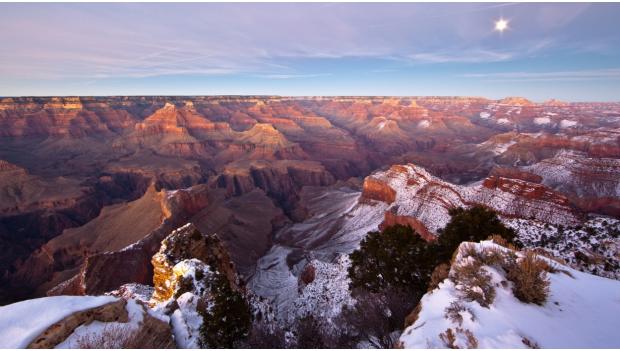
8. Lower Yosemite Falls
Yosemite National Park, California
Perhaps the easiest “hike” on this list (and perfect for all ages), Lower Yosemite Falls is a must-do winter experience for park-goers in the Yosemite Valley. Despite some occasional road and trail closures, Yosemite is usually accessible in the winter, with Lower Yosemite Falls being no exception. Ten times taller than Niagara Falls, this natural waterfall wonder is only half a mile from the trailhead, or 1.5 miles from Yosemite Village. It can get icy on the paved trail, so be cautious. Enjoy a post-walk hot chocolate by the fire at the Ahwahnee Hotel. Learn more about Lower Yosemite Falls, here.
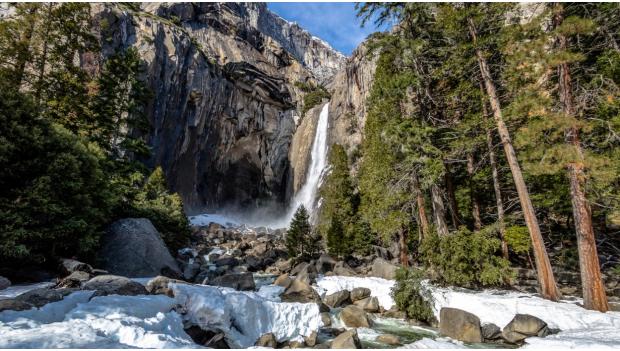
9. Lost Lake Trail
Red Lodge, Montana
Montana is known as a rugged winter wonderland, and there’s no better representation than the Lake Fork Trail. Snowshoes are required in the winter, but this relatively mild trail packs some serious features. The trail follows the Lake Fork Creek, and within a mile you’re greeted by the frozen Silver Run Falls (an ice climber’s paradise). Continue up the trail to Lost Lake for a grand total of 9.8 miles round trip with 1,325 feet of elevation gain. Note the access road may be closed during poor conditions, so add another 1.5 miles to reach the trailhead. Learn more about the Lake Fork Trail, here.
